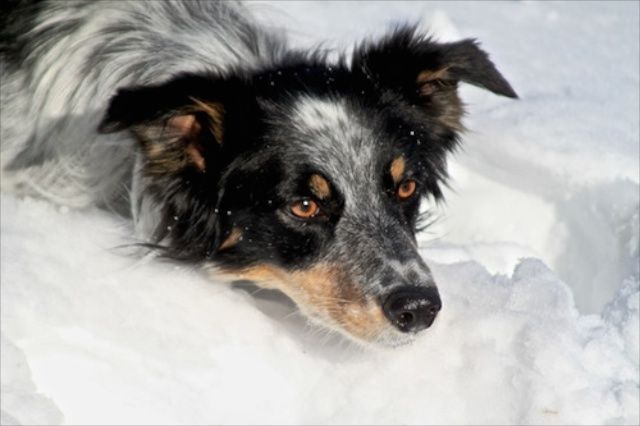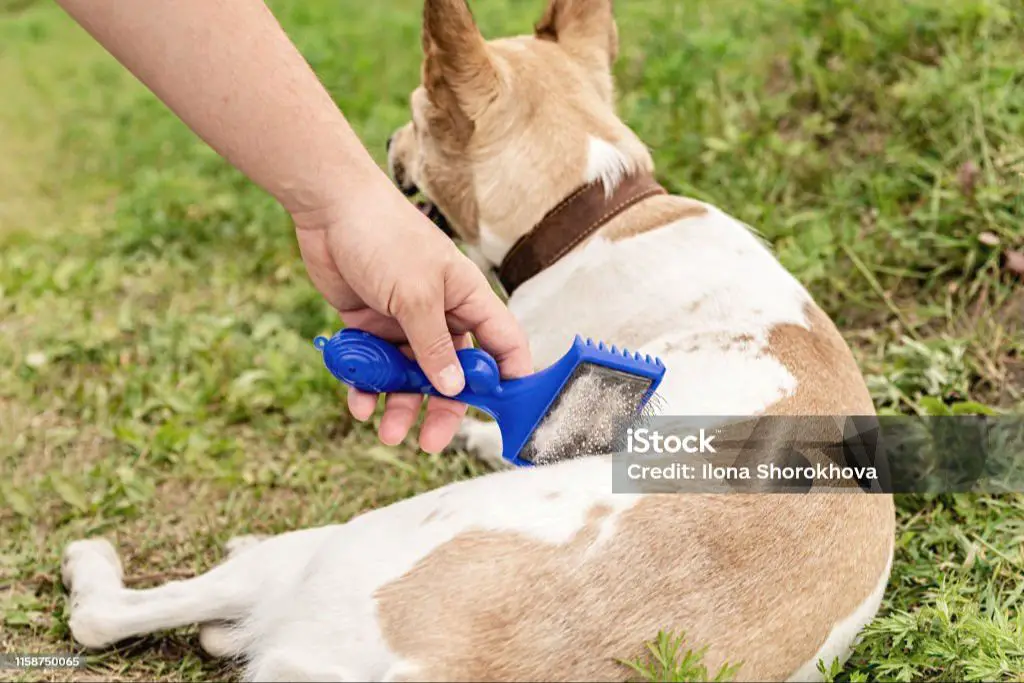Introduction
Mixed breed dogs, also known as mutts or designer dogs, have become increasingly popular in recent years. Proponents argue that mixed breeds tend to be healthier and live longer than purebreds due to hybrid vigor. However, while mixes can make wonderful pets, some combinations are more prone to health and behavior issues than others.
When two purebreds are crossed, a mixed breed dog can inherit any trait from either parent breed – good or bad. Certain purebreds have significant health problems or challenging personalities. Breeders creating first generation crosses do not always carefully screen parent dogs or truly understand how the puppies will turn out. This has led to some mixed breed dogs that struggle with poor health, aggression, extremely high energy, and other difficulties.
While mixes offer diversity, some combinations are best avoided by families or novice owners. This article provides an overview of some of the most concerning mixed breeds, so readers can make informed choices if considering a mutt.
Poor Health
When mixing dog breeds, it’s important to consider that certain breeds are prone to health issues that can be exacerbated when mixed. For example, pugs and bulldogs often suffer from breathing problems and overheating due to their short snouts and narrow nostrils. Mixing them with a breed that has a long snout can potentially lead to moderate or severe breathing difficulties. Similarly, Dalmatians are prone to deafness, heart problems and bladder stones, while German Shepherds often suffer from hip dysplasia. Combining these breeds could result in offspring predisposed to multiple health problems.

Other breeds with notable health issues include Shar Peis with their many skin conditions, Labrador Retrievers with joint dysplasia, Beagles with epilepsy, Great Danes with bloating, and Dachshunds with back problems. Breeding any of these dogs with other breeds prone to health issues is likely to compound vulnerability to disease and pain.
For the health and wellbeing of designer dog breeds, it’s best to avoid mixing breeds with known congenital disorders. Reputable breeders should test parent dogs for breed-specific conditions. But even with health screening, first generation mixes can still inherit latent issues. Prospective dog owners should be prepared to provide extra veterinary care for these at-risk hybrids.
Aggression
Some mixed breeds can have tendencies toward aggression and biting that may emerge if not properly trained and socialized from a young age. This can especially be an issue with certain combinations like pit bull mixes or breeds mixed with livestock guardian dogs like Great Pyrenees or Akbash. For example, some pit bull mixes like Cane Corso mixes can be predisposed toward dog aggression or territorial behavior if not carefully trained. Herding breed mixes like border collie/husky can also exhibit nipping and chasing tendencies that require dedicated socialization. Similarly, livestock guardian breeds were developed to ward off predators so mixes with those breeds can sometimes demonstrate unwarranted aggression.
Proper socialization and training from puppyhood are essential for any powerful or protective breed. It’s also critical to avoid encouraging aggressive play or possessive behaviors around toys or food. Responsible owners need to be alert to any warning signs and ready to consult professionals like veterinary behaviorists if issues arise. With dedication and patience, the vast majority of dogs can become well-adjusted companions. But it’s important to research the breeds in a particular mix and prepare accordingly if certain inherited traits are likely.
High Prey Drive
Some mixed breed dogs end up with an unexpectedly high prey drive that can make them difficult to handle safely. This often happens when hunting breeds like terriers or hounds are crossed with non-hunting companion breeds. The hunting breeds are selectively bred to have strong instincts to chase and kill prey like rabbits, rodents, or birds. When mixed with other breeds that lack these traits, some puppies will inherit the hunting drive. This can create dogs that are obsessed with going after neighborhood cats, squirrels, and sometimes young children if triggered to give chase. High prey drive dogs require extensive training and very secure spaces where they can’t slip out and hunt. Even well-trained dogs should not be trusted off-leash or with unfenced access to roads where they may bolt after anything that runs.
High Energy

When you mix a high energy breed like a Labrador with a low energy breed like a Basset Hound, it can create challenges for owners. The high energy dog will likely require much more exercise and stimulation than the low energy dog. This can be difficult to manage, as the owner will need to find ways to meet both dogs’ needs.
High energy dogs have an innate need to be active and engaged. Without proper outlets for their energy, they are prone to developing behavioral issues like hyperactivity, chewing, digging, and other destructive behaviors. Meanwhile, a lower energy dog may be content relaxing at home. Forcing a couch potato dog to keep up with an energetic dog on long walks or hikes can cause them stress and exhaustion.
To make a mixed high-low energy pair work, owners need to find ways to exercise the high energy dog separately. This may mean having two sets of walks, toys, or activities based on each dog’s needs. It also helps to provide interactive puzzles and games that mentally stimulate the higher energy dog when physical activity isn’t possible. With thoughtful management, a high-low energy pairing can thrive. But owners should be prepared for the additional time and effort it requires.
Difficult Training
One challenge of owning a mixed breed dog is that their personality and trainability traits are less predictable than purebreds. Since mixed breeds draw genetic influence from multiple breeds, their temperament and instincts can be complex or conflicting. This can potentially make training more difficult compared to dogs bred for generations to perform certain tasks like hunting, herding, or protection work.
For example, a mix between a working or hunting breed (high prey drive) and a companion breed (low prey drive) may exhibit moderate prey drive that is confusing when training tasks like recall. Or a mix between an independent thinker breed and a people-pleasing breed may be inconsistently motivated to follow commands or focus on their handler.
The hybrid vigor of mixed breeds can also result in extremely high energy and exercise needs. Outlets like agility, running, or long hikes may be required to prevent destructive or anxious behavior. Training sessions will be most productive when a dog’s exercise needs are fully met.
While mixed breeds can be smart and trainable, their diverse genetic makeup means each dog is a unique individual. Patience, consistency, proper socialization and managing their energy levels are key to bringing out their best. Their training style may differ from traditional methods used for purebreds, requiring an adaptive approach. But they can thrive with owners committed to understanding their unique needs.
Grooming Needs
Grooming a mixed breed dog can often present challenges, as the puppies can inherit a coat type that is vastly different from one or both parents. For example, a Labradoodle (Labrador Retriever crossed with a Poodle) may have the Poodle’s thick curly coat, the Lab’s short straight fur, or something in between. Without knowing how the genes will express themselves, it’s hard to predict what kind of grooming a mixed breed will require.
Some combinations are more prone to matted, tangled fur that requires extensive brushing and professional grooming. Crossing a double-coated breed like a Husky with a short-haired breed often results in thick fuzzy coats that must be frequently brushed. Doodles and Poo mixes tend to need regular haircuts and brushing as well. Other crosses like a Beagle and Basset Hound mix may have easier grooming, but there are no guarantees.

Prospective owners should be prepared to regularly brush and bathe their mixed breed, as well as have them professionally groomed every 4-8 weeks. Budgeting for grooming expenses is essential. Without proper grooming, many mixed breeds are prone to painful mats and skin issues.
Ideal Environment
Some mixed breeds have very specific environmental needs due to the traits they inherit from their parent breeds. For example, a Husky/Labrador mix will likely need more exercise and mental stimulation than a typical family dog. Similarly, a territorial guard dog mix like a German Shepherd/Rottweiler will need a home without many guests coming and going. Considering the ideal environment for a mixed breed dog is important to ensure they thrive in their new home.
High energy working dog mixes like Husky/Malamute crosses need owners committed to providing them with vigorous daily exercise and activities to prevent boredom and destruction. These dogs would not do well cooped up in a small apartment all day. On the other hand, low energy companion dog crosses like Cavalier King Charles Spaniel/Poodle mixes need less exercise and would be content in a smaller home. However, they would still need daily walks and playtime.
Some mixed breeds have high grooming requirements that require a tidy home without carpeting or furniture they could damage. Double-coated dogs like Goldendoodle mixes shed heavily and need daily brushing and vacuuming. Short-haired mixes like Pittie/Lab crosses are lower maintenance but still require weekly brushing. Providing the appropriate environment helps keep the dog’s coat healthy and home clean.
Territorial guarding breeds need extensive socialization and obedience training from an early age to curb any aggressive tendencies. An experienced owner able to set clear boundaries and limitations is ideal for these mixes. They should be monitored closely around strangers and children. High prey drive terrier mixes also need supervision around small pets. The ideal environment depends on the temperament and needs of the individual dog.
Making sure you can provide the ideal environment will ensure a good fit and happy life for both you and your mixed breed dog. Consider not just your current home, but also your lifestyle, experience level, and commitment to providing everything your new furry friend needs to thrive.
Finding Responsible Breeders

When looking for a mixed breed dog, it’s important to find responsible breeders who prioritize the health and well-being of their dogs. Avoid puppy mills or breeders who are only interested in profit. Here are some tips for finding a responsible mixed breed breeder:
Ask for referrals from your veterinarian or friends who have mixed breed dogs. A personal recommendation can go a long way.
Make sure the facility is clean, spacious, and allows the breeding dogs and puppies to interact. You should be allowed to meet the parent dogs.
Ask questions about the parent dogs’ health and personalities and request health clearances. Responsible breeders will test for issues common to the breeds in a mix.
Avoid breeders who have multiple litters available or puppies readily available. Responsible breeding is done infrequently and with care.
Expect to sign a contract stating you will spay/neuter the dog and return it if you cannot care for it. Responsible breeders care about the lifetime of the puppies.
Be prepared to be put on a waiting list. Breeders who instantly provide puppies often mass produce dogs without attention to health or socialization.
Avoid choosing a dog based solely on looks. Ethical breeders match puppies’ personalities and needs to buyers.
Responsible breeders will screen you to ensure you can properly care for one of their puppies. They want the best homes for their dogs.
Be wary of very low prices. Quality breeding and care is expensive. An unusually cheap puppy could indicate irresponsible breeding practices.
Conclusion
When considering a new canine companion, it’s important to carefully research the traits and needs of any dog breed you’re interested in. While mixed breeds can make wonderful pets, some combinations may be prone to health issues, behavior problems, high energy levels, intensive grooming requirements, or other challenges unprepared owners may struggle with.
If you have your heart set on a mixed breed, especially one that blends breeds with very different characteristics, be honest with yourself about whether you can provide the proper care, training, and environment that dog will need to thrive. Work with responsible breeders who know the background of both parent breeds and can help match you with a pup whose inherited traits and temperament will mesh well with your lifestyle.
By taking the time to understand the potential drawbacks of certain mixes, you can make the most informed choice for your family. With plenty of research, preparation and responsible breeding, mixed breeds can become cherished, well-behaved pets.